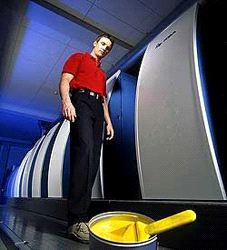Business News
Printing presses: Koenig & Bauer AG quarterly report

Thursday 15. May 2008 - Orders up, turnover down Order intake up 5.5% Improved plant utilisation at web press facilities Profits hit by lower turnover Management reaffirms projections for 2008
Defying the financial crisis, a strong euro and a pre-Drupa lag in demand for sheetfed presses, in the first three months of the year German printing press manufacturer Koenig & Bauer AG (KBA) posted a 5.5% increase in new orders to 370.3m (2007: 350.9m). Its web and special press division bucked the industry trend with major contracts from US and Turkish newspaper publishers, which helped boost the order intake by an above-average 10.6% from 180.2m to 199.3m. And despite a sluggish US market, the volume of incoming orders for sheetfed presses, at 171m, was roughly the same as the previous year (170.7m).
As in the years 2004 to 2006, group sales fell well short of the prior-year figure (301.7m, compared to 414.2m). While sheetfed sales of 144m were just 8% lower than in 2007 (156.6m), sales of web and special presses slid by more than a third, from 257.6m to 157.7m. This is because most web presses will not ship until the second half of the year. As KBA president and CEO Albrecht Bolza-Schünemann put it: “accounting schedules have no bearing on shipping schedules.”
The shortfall in sales impacted heavily on results, with an operating loss of 5m (2007: 13.5m profit) and pre-tax loss of 6.4m (2007: 13m profit) lagging targets by a wide margin. KBA closed the quarter with a net loss of 1m (2007: 9.3m profit) and proportional earnings per share of -6 cents (2007: +57 cents).
The volume of unfilled orders for web and special presses rose from 565.9m to 611.5m, ensuring that the level of plant utilisation will be higher into the autumn than it was in the past few quarters. But the backlog of orders for sheetfed presses fell from 319.5m to 249m, so further contracts are needed to safeguard production in the second half-year. KBA is confident that the Drupa trade fair that opens in late May will provide the necessary stimulus. Fluctuations in capacity utilisation in the first quarter were absorbed via flexible working hours. At the end of March the KBA group payroll stood at 8,181, or 108 fewer than at the same time last year.
Positive cash flow
Cash flows from operating activities surged to 88.6m from 41.5m twelve months earlier. An increase in customer down payments and a drop in trade receivables more than compensated for the liquidity tied up in bigger inventories for imminent shipments. The free cash flow swelled from 35m to 73.5m, while funds increased to 183.8m from 134m at the end of last year.
Export level eases to 84.1%
While domestic sales were virtually unchanged at 48m (2007: 48.3m), the export level declined from 88.3% to 84.1% following a substantial slide in shipments to North America, where a weak economy, a credit squeeze and a virtual moratorium on investment by newspaper publishers precipitated a slump to an historic low of just 5% of group sales. The rest of Europe accounted for 60.7% of the group total, followed by Germany (15.9%), Asia and the Pacific (15.1%) and Africa/Latin America (3.3%).
Management reaffirms projections for 2008
On KBA’s prospects Bolza-Schünemann says: “Looking beyond the unsatisfactory first-quarter sales and earnings, and notwithstanding the economic, currency and commodity-related risks our group is facing, we stand by the targets we stated in late March of around 1.6bn in sales and a pre-tax profit on a par with 2007 (63.2m). The outlook for the second half-year will be much clearer once the figures for Drupa, a key industry event, have been assessed, and we shall be informing shareholders at the AGM on 19 June.”
